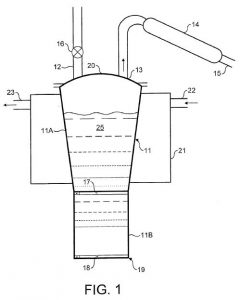What is a green patent?
The green patent fast-track program – the tree-huggers’ dream, the green activists’ fantasy and the environmentalists’ vision – it’s a marvellous little thing. But what is a green patent? Well, according to Techopedia, a green patent is “a patent on products or designs that provide environmental benefit”. But why are they fast-tracking these patents? Firstly, the environmental policy in the UK (and internationally) declared that environmentally-friendly innovation has become a key priority. Furthermore, the rate at which knowledge is passed from inventors to manufacturers is increased. In a nutshell, it speeds up the advancement and development of green technology. It also means that information is more readily available when tackling current global environmental issues such as climate change.
Fast-tracking green patents can now help inventors to obtain a patent in just a few months. It’s a big improvement when compared to the previous three to four year waiting period. Antoine Dechezleprêtre, an Associate Professorial Research Fellow at Grantham Institute of Climate Change and the Environment, stated that the first green patent was issued in the UK. However, other countries have adopted this brilliant idea with a unified goal of addressing global environmental challenges. But is this fast-tracking program adding any real value? This question brings us to the first patent application ever submitted under this accelerated procedure; Josef Tapper and his innovative method of heat generation.
The first green patent application
The first green patent submitted under the fast-track program provided a new method of heat generation. The patent abstract states it is “a method of heat generation comprising reacting carbohydrate with a concentrated acid in a reaction vessel in an exothermic reaction, and removing the heat generated by the reaction through a heat exchange medium”. Yes, it does sound relatively long-winded and complex. However, the real value in this method lies is in the absence of fossil fuels.
Typically, heat is produced from burning fossil fuel. This occurs locally (in an oil, gas, or coal-fired boiler) or in a remote location using an electrical power station. The main disadvantage of these methods is that fossil fuels generate carbon dioxide, which is largely responsible for increasing the temperature of the Earth’s atmosphere. This is more commonly known as ‘the greenhouse effect’. Therefore, the green patent fast-track program provides inventors with an opportunity to make a real impact.

To conclude, Josef Tapper’s unique method of heat production is a shining example of how beneficial the green patent fast-tracking program can be. But perhaps more importantly, we can tackle current global environmental challenges with pace. If you have a new product idea that involves green technology, Innovate can help. Simply submit your idea via our online submission form.

